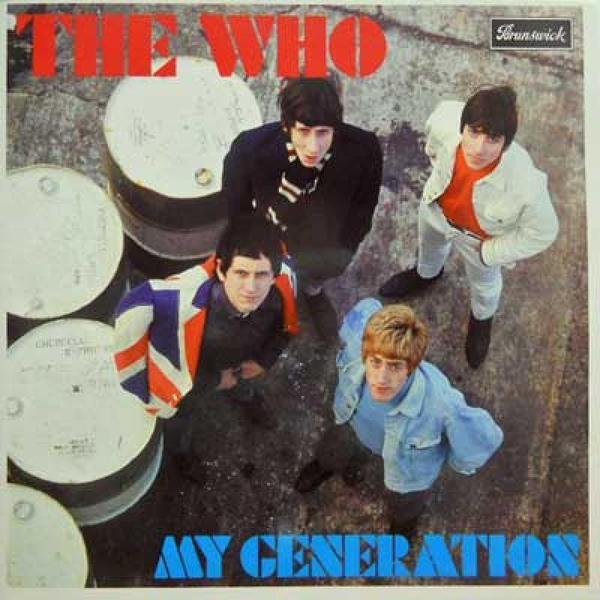The Who’s 20 greatest songs, ranked – from ‘My Generation’ to ‘Pinball Wizard’
The band may have cancelled their tour amid the coronavirus outbreak, but Graeme Ross has chosen his 20 favourite Who songs for fans to recreate their concert at home

This week should have witnessed the start of The Who’s UK tour. Instead, the band have become one of the many acts who have been affected by the coronavirus pandemic.
Now in their fifth decade as a recording act, the original quartet remain the quintessential drums, bass, guitar and vocalist rock band. The third part of the great triumvirate of English bands of the Sixties (with due respect to The Kinks), The Who were a force of nature both on stage and in the studio. Roger Daltrey was the charismatic front man, the manic Keith Moon – dwarfed by his massive drum kit – assailed his instrument, and Pete Townshend’s flailing whirlwind guitar action provided a strong visual focus. Meanwhile, laid-back bassist John Entwistle just stood and yawned while anchoring the overall sound. And it was all possible because of Pete Townshend’s wonderful songs, celebrated here on this list of the 20 greatest Who tracks.
20) “I’m a Boy” (single, 1966)
Astonishingly, for all their phenomenal achievements, The Who have never had a number one single. “I’m a Boy”, with its gender identity theme, was an unlikely No 2 smash. Full of wonderful harmonies, this quirky study of a young man who rejects his mother’s attempts to raise him as a girl is one of Townshend’s most humorous, poignant and unusual songs.
19) “Blue, Red and Grey” (The Who by Numbers, 1975)
“Blue, Red and Grey” is rarely mentioned in lists of greatest Who songs, Roger Daltrey is a big fan of this charming low-key number – the eternally self-examining Townshend less so. Composed on the ukulele during a depressed time in his life, the only other instrumentation is the Hovis advert-themed brass, as Townshend sings about the simple joys of life no matter the time of day.
18) “The Song is Over” (Who’s Next, 1971)
One of the many highlights of the masterpiece that is Who’s Next is Pete Townshend’s vocal contributions, his highly affecting lighter voice provides an effective counter balance to Daltrey’s epochal hard rock sound. The Daltrey/Townshend vocal tag-team on this beautiful ballad, rescued from the abandoned Lifehouse project, is a delight (with the lyrics possibly referring to the ending of a love affair).
17) “Young Man Blues” (Live at Leeds, 1970)
Fittingly, the band touted by many as the greatest live act of the Seventies released an album capturing everything that made them great in the concert arena. It marked the end of The Who’s first great era and heralded the beginning of a new one. The powerhouse version of Mose Allison’s “Young Man Blues” found the quartet in their absolute pomp.
16) “Pictures of Lily” (single, 1967)
A boy falls in love with a picture of a Vaudeville artist only to be told that she had died in 1929. A la Peter Ibbotson, he finds comfort in his dreams with the subject of his desires. Or as Townshend says, it could simply be about masturbation. Regardless, it’s a power-pop classic of adolescent longing.
15) “Who Are You” (Who Are You, 1978)
The title refers to a fraught meeting with covetous ex-Beatles and Rolling Stones manager, Allan Klein, prompting Townshend to go on a massive bender with Paul Cook and Steve Jones of the Sex Pistols. Alternatively proggy, hard rocking and melodious, the original quartet’s last hurrah is a fitting epitaph for Keith Moon, who died soon after it was released.
14) “Anyway, Anyhow, Anywhere” (single, 1965)
The famous Who harmonies are all over this Top 10 single, which is that rarest of beasts – a Townshend/ Daltrey co-write (the only time they wrote together). And how far ahead of the game this must have seemed in 1965, with its riot of feedback and distortion midway through. Nothing quite like it had ever been heard before and it proved infinitely influential.
Enjoy unlimited access to 100 million ad-free songs and podcasts with Amazon Music
Sign up now for a 30-day free trial. Terms apply.
ADVERTISEMENT. If you sign up to this service we will earn commission. This revenue helps to fund journalism across The Independent.
Enjoy unlimited access to 100 million ad-free songs and podcasts with Amazon Music
Sign up now for a 30-day free trial. Terms apply.
ADVERTISEMENT. If you sign up to this service we will earn commission. This revenue helps to fund journalism across The Independent.
13) “The Real Me” (Quadrophenia, 1973)
All four members are at the peak of their powers on Quadrophenia’s glorious scene-setter, although it’s tempting to say that “The Real Me” is all about the bass. John Entwistle possessed an incredible ability to turn his bass guitar into a lead instrument, and his work here drives a dynamic song reflecting the conflicted personality of Jimmy, Quadrophenia’s protagonist.
12) “Pinball Wizard” (Tommy, 1969)
The story of “the deaf, dumb and blind kid” reached No 4 in the UK and remains inexorably linked with Tommy, but is strong enough to transcend the rock opera and to even survive a cover by the New Seekers. Fantastic strummed acoustic guitars and slashing riffs from Townshend and an archetypal Daltrey vocal can both be heard on arguably the Who’s most famous song.
11) “See Me, Feel Me” (Tommy, 1969)
Actually part of Tommy’s closing song “We’re Not Gonna Take It”, “See Me, Feel Me” was extracted from that track as a stand-alone single after a legendary performance at the Woodstock festival. Unlike “Pinball Wizard”, it failed to chart in the UK – the song’s strength and resonance lay in its status as the emotional and spiritual highpoint in the finale of Tommy.
10) “The Kids Are Alright” (My Generation, 1965)
A Byrds’ influence is detectable on the jangly guitars of the ultimate Mod anthem, with a 20-year-old Townshend maturing quickly in terms of his songwriting. Here, his narrator is leaving someone or something behind – either his wife or the Mod movement itself. But he’s satisfied that “the kids are alright”.
9) “5.15” (Quadrophenia, 1973)
Documenting a drug fuelled train journey, this tremendous brass-driven single from Quadrophenia offers sweet and sour vocals, thumping percussion and blistering Townshend riffs, and culminates in the heartbreaking “why should I care?” coda. The band gave an ill-advised but memorable performance of “5.15” on Top of the Pops and, predictably enough, they destroyed their equipment and ran riot afterwards.
8) “I Can’t Explain” (single, 1965)
The first of a run of classic three-minute hit singles has an edginess underneath the innocent charm. Perhaps that’s down to the power of 18-year-old Keith Moon or the garage rock/power pop fusion fuelled by the Kinks influence, in particular “You Really Got Me”, but as an opening statement, “I Can’t Explain” is pretty much unbeatable.
7) “Behind Blue Eyes” (Who’s Next, 1971)
Who’s Next’s reputation rests not only on its power chord numbers, but the glorious ballads too. This is the best of them, although it still rocks out. Lyrics like “No one knows what it’s like/to be the sad man/behind blue eyes”, seem like a twist on “Tracks of My Tears”, however by any standards, “Behind Blue Eyes” is a Who classic.
6) “Love, Reign o’er Me” (Quadrophenia, 1973)
The epic and hugely emotional conclusion to Quadrophenia is almost classical in its conception and execution. The instrumentation is world class, with Moon’s thunderous drums, Entwistle’s driving basslines and Townshend’s whiplash guitar and synthesised strings, vital components. However, “Love Reign o’er Me” is Roger Daltrey’s song, and his stunning, soaring vocal over the heartbreaking melody provides the majesty it deserves.

5) “Substitute” (single, 1966)
An intricate study of confused identity with the self-deprecating lyrics masterfully delivered by Daltrey. Townshend was moving on apace as a songwriter with some wonderful imagery here (“I see right through your plastic mac”). Power pop at its finest with the opening acoustic guitar chords and bass-driven solo etched on the memory, “Substitute” is perhaps The Who’s most-loved single.
4) “Baba O’Riley” (Who’s Next, 1971)
The anthemic opening track from The Who’s greatest album demonstrated how far Townshend’s song craft had progressed, even from the triumphant Tommy. The “Teenage Wasteland” lyric reflected Townshend’s observations of drug-addled fans at rock festivals, and the music is simply sensational, from the hypnotic synthesiser intro all the way through to the memorable electric fiddle climax. Daltrey’s essential vocal is the icing on the cake.
3) “I Can See for Miles” (The Who Sell Out, 1967)
The huge production with thundering Keith Moon drums and Townshend’s jagged riffs is the key to what Pete Townshend has described as the “ultimate Who record”. Townshend was crushed when this fantastic single stalled at No 10, but perhaps this rare excursion into psychedelia, with its themes of deceit and paranoia had too ominous a vibe for the trippy scene of 1967.
2) “My Generation” (My Generation, 1965)
The Who’s early career-defining song spoke for and to a generation of disaffected youths. Entwistle’s incredible bass runs, Daltrey’s iconic stuttering vocal with implied expletive, Moon’s frenetic drumming, Townshend’s opening riff and closing feedback, and one of the most famous lines in rock, “Hope I die before I get old”, make this as influential as any one record can possibly be.
1) “Won’t Get Fooled Again” (Who’s Next, 1971)
Over eight minutes long and featuring the most iconic scream in Seventies rock, the ultimate Who stadium anthem works on two levels – as a withering assessment of the political status quo and those who seek to change it, and as a mighty power chord epic. The mesmerising synthesisers embellish the majesty of The Who’s greatest song which Townshend called “a prayer”.
Join our commenting forum
Join thought-provoking conversations, follow other Independent readers and see their replies
Comments
Bookmark popover
Removed from bookmarks